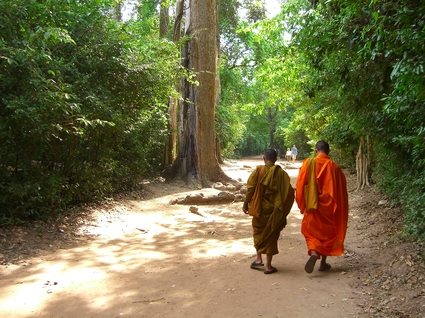 What Does lomilomi actually mean? What is the direct translation? As an earnest practitioner of this technique, I became interested in what the term actually means. I have myself in earlier posts attempted to offer my thoughts but it turns out, after much research, the the reality is less clear. A search of the internet reveals no shortage of sites offering a "translation". Many massage therapists who offer or claim to offer lomi massage almost always include a definition of some type. Many with such authority you would think it could have been found written on stone tablets some 5,000 years ago. The truth, contrary to much of what is written, is we are not sure. There is a common understanding that today, in the modern world, (2018 as I write this) LomiLomi has come to mean "Hawaiian Massage" or "Loving Touch". Lomi Lomi in a very diluted form is offered in spas and hotels and massage practices all over. It is offered in Hawaii and as well in other parts of the world. As well, there are a number of dedicated practitioners who offer a more pure form of Lomi. Although I am not Hawaiian, I consider myself to be a part of this group because my interest is pure and genuine and my search for knowledge and learning is ever ongoing. Separate from a discussion about the work itself, and a history of the work, this post is simply about the term. Because the Hawaiian language is an oral language, there are no early texts upon which to research. The Hawaiian language was first codified and written down by English missionaries in the 18th century, thus every aspect of the written language is quite modern; a western interpretation of what these early missionaries heard. The timeline of Hawaii can be roughly divided into 2 eras, Pre contact and post contact. In pre-contact Hawaii, all knowledge, language, learning was oral. Upon arrival of Captain Cook in 1778, we first read Hawaiian words. Captain James King, who arrived with Captain Cook in 1779 observed LomiLomi in his journal, but did not give it a name. The first documented use of the word "Lomi" was found in the account of surgeon and naturalist Archibald Menzies, who accompanied Captain Vancouver in 1794. Vancouver himself used the Tahitian word RumiRumi (he spelled it roome roome). Among early native Hawaiian historians, the fist use of the word appears to be by David Malo, writing sometime between 1835 and 1858. In 1865 it appears in a dictionary by Lorrin Andrews as follows: LomiLomi: 1. A rubbing, pressing 2. The servant whose business it was to take care of the spittle and excrements of the chief. Hardly the stuff of a glorified spa visit! In contrast, however are numerous early foreign historians who give accounts of Lomi Lomi as a wonderful rubbing or massage and or to the person administering the massage, such as this one by James Jackson Jarves writing in 1843; "Servants who were especially trained in LomiLomi - a luxurious kneading or shampooing (from the Hindi word Champo for massage), and stretching and cracking of the joints (bonework), exceedingly pleasant withal, and operating as a gentle and refreshing exercise. Other terms such as HamoHamo which was described as "to rub oil on the skin, to massage the muscles. And iwikuamo 'o as "to tread on the back. It is interesting that this word when spoken can sound a bit similar to hamohamo. Is it possible then that over time, as this beautiful Hawaiian language was growing dim and recorded in various journals that Lomi Lomi was the only term that people remembered? or the term that survived, and that originally it was once a term that described something similar or related but not identical to the work we do today?? There you have it! That combined with research into the ancient arts of Hawaiian healing and martial arts have allowed us to piece together a picture of a comprehensive wellness treatment that was "exceedingly pleasant withal, and operating as a gentle and refreshing exercise.". The definitive Hawaiian Dictionary, first published only as recently as 1956 but is still in use today defines lomi as massage. and lomilomi as a reduplicate of same. So it is in this that I leave you - the origins of the term are interesting, yes, but not so special as to obscure the history and the origins of the work itself, which has been done and passed on for generations, morphing I am certain along the way but today being administered by a select group of dedicated practitioners, in the best way that they know how, with the best of intention, and with all the knowledge they posses which has been handed down to them from teacher to teacher, back to to the ancients. -with Aloha
0 Comments
 Couples Massage - Private WorkshopCouples Massage - Private WorkshopTreat your someone special to something unique this Valentine’s Day! Learn to give each other the gift of massage ! Giving and receiving massage can be one of the most enjoyable experiences you can share. From relaxing to romantic - learning some proper techniques can enhance the experience while learning how to protect yourself from strains, aches and pains. Based on the principles of Swedish Massage, this highly focused personalized one-on-one workshop is designed to give you the basics to begin your foundation of giving a great massage. It can be done in private or in small groups. Are you looking for new and exciting ways to connect? Are you open? Ready to experience new ways of releasing tension and stress in your bodies? Would you like to find new ways of celebrating your love and expressing your love through the power of touch? Couples take a couples massage class for many reasons but almost always in part to deepen their connection with each other. To feel their partner in new ways both their physical body as well as through an emotional connection, and an exchange of energy. Through touch we are able to feel, read and share an even more intimate relationship with our partner. All you have to do is breathe, believe in love and begin. For more information regarding my Couples Workshop click here A Tale of 2 Monks.......
Two monks were walking along a river when they came upon a crossing point. At the crossing was a woman in tears. She told them that she was afraid of the water and could not cross. Without a word, or hesitation, the older monk proceeded to carry the woman on his shoulder, crossed the river and let her down on the other side. The two monks resumed their path while the woman went her own way. When they returned, the younger monk, obviously agitated, continued shaking his head and muttering under his breath. After a moment the older monk finally asked him what was wrong. The younger monk said, "Brother, we are prohibited from any contact with women, yet you carried that woman across the river on your back. You let her crawl onto you and you held her! " The older monk gave a slight smile and said to his younger companion: "Brother, I left her 2 miles back at the crossing. Yet, you still appear to be carrying her" This is a very well known Zen parable about letting go. But there are so many things to take away from this simple story. What do you see in that relates to your life and your observations of friends, family. |
A Really Good Massage BlogAbout MeI write about things that I myself need to be mindful of. ways in which I would like to improve. It is not from the perspective of preaching - but rather writing helps me work out what I myself need to do - we are all in this together.
Archives
February 2024
Categories
All
|
AWARD WINNING
|
|



 RSS Feed
RSS Feed
